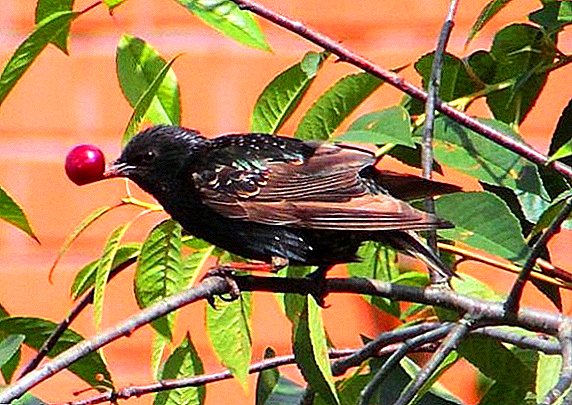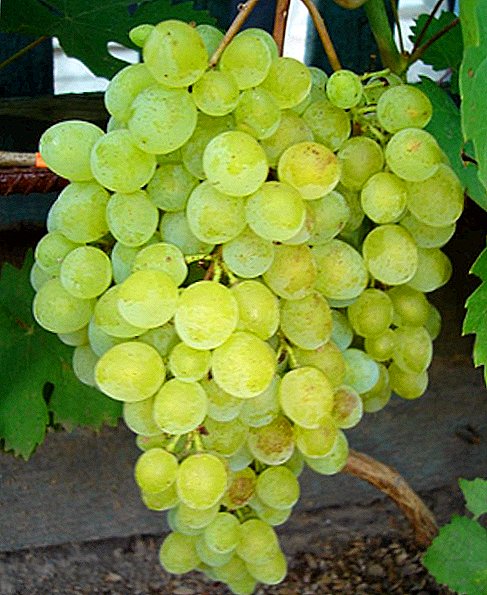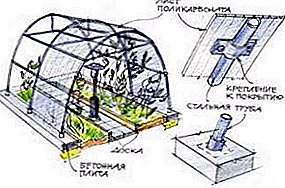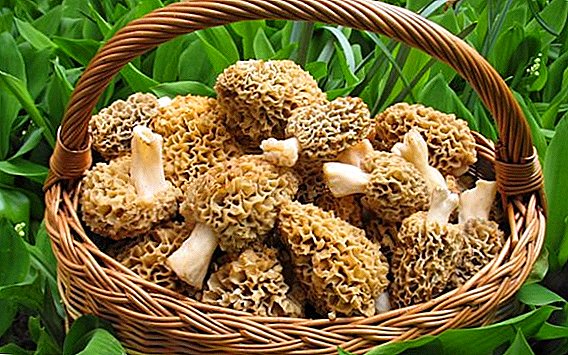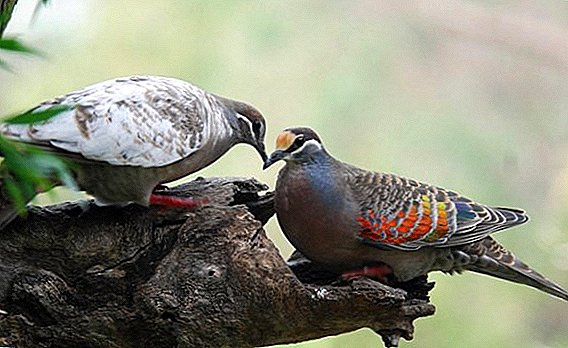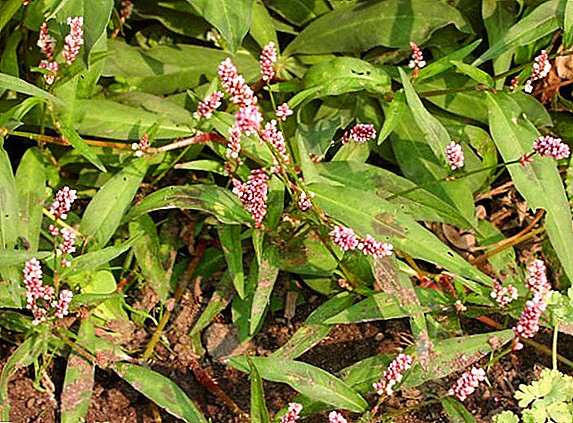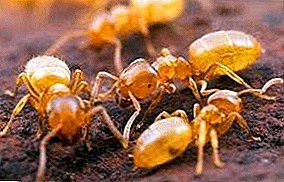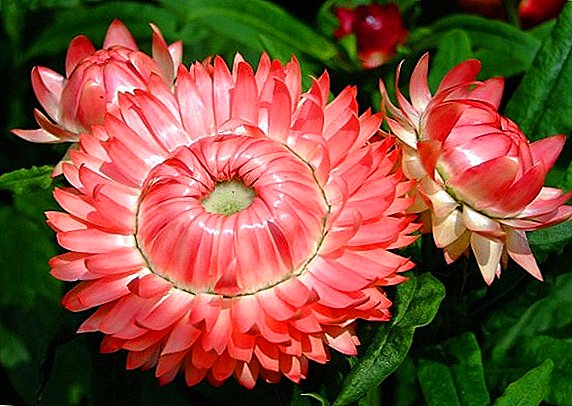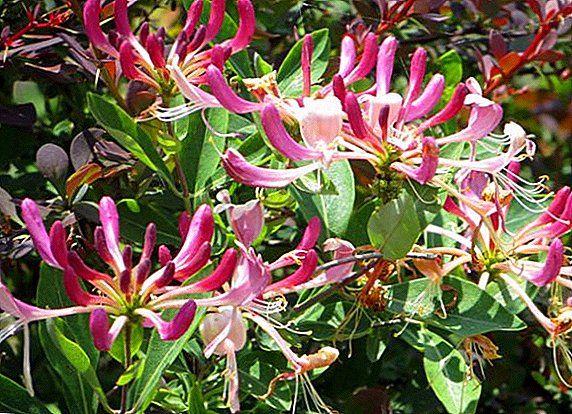 Honeysuckle is a shrub named after the German botanist, physicist and mathematician Adam Lonitser. From the Latin name of the bush translates as "Lonícera". In nature, you can find about 200 types of honeysuckle, which have different tastes: sweet, sour-sweet or bitter.
Honeysuckle is a shrub named after the German botanist, physicist and mathematician Adam Lonitser. From the Latin name of the bush translates as "Lonícera". In nature, you can find about 200 types of honeysuckle, which have different tastes: sweet, sour-sweet or bitter.
In this article, you will learn what types of plants are and how honeysuckle blooms in our gardens.
Curly honeysuckle

For the first time this type of honeysuckle appeared in Europe, more than 100 years ago. It is most often used for vertical gardening.
Decorative honeysuckle bush has the following description:
- it is a curly shrub reaching up to 6 m in height
- leaves reach up to 10 cm in length and presented in the form of eggs, the upper side is dark green and the lower side has a bluish tint
- flowers are yellow with a red tint, have a sweet aroma and reach up to 5 cm in length
- bright red fruits are considered inedible.
Most often, honeysuckle curly is used for decoration of fences, columns and arbors.
For hedges use Magonia, barberry, rhododendron, lilac, rosehip, cotoneaster, yellow acacia.
Lianovid or curly decorative honeysuckle has a mass advantages:
- A large number of bright and fragrant flowers
- Colorful and decorative fruits
- Thick and beautiful foliage
Alpine honeysuckle

The homeland of this species are areas of Southern and Central Europe.
The low shrub honeysuckle species Alpine has the following description:
- Plant height - 1.5 m
- Spherical and dense crown
- The leaves are dark green and large, grow to 10 cm in length
- Greenish-yellow flowers are double-lipped and do not smell, grow up to 5 cm
- Fruits are large and red, similar to cherry
Important! The fruits of this species are poisonous.Such honeysuckle grows rather slowly. She also tolerates winter and shearing and is practically not affected by diseases.
Alpine honeysuckle is used in a single or group planting - it looks beautiful in groups to decorate edges and hedges.
Blue Honeysuckle

The list of popular types of honeysuckle includes Blue or Edible.
This species of plant is found in the Carpathians, the Alps and the central part of France, where the Blue honeysuckle is protected in reserves.
Locals call the berries buzan or goose. Most often, blue honeysuckle is used for decorative purposes or as a honey plant.
May be suitable for creating dense fences or fluffy groups of plants. She has The following description:
- Shrub height - 2 m
- It has a spreading and thick crown
- The leaves are lanceolate and rounded at the base, grow to 8 cm in length and have a dark green color.
- Honeysuckle has pale yellow flowers that look like bells that grow up to 1.2 cm in length.
- The berries are blackish-blue with a slight touch and have a bitter taste.
Honeysuckle Capricole (Fragrant)

Shrub honeysuckle species Kaprifol is considered one of the best ornaments of vertical gardening.
He possesses the following advantages:
- Unpretentious care
- Wonderful aroma of flowers
- Fast growth
- Abundant amount of decorative foliage
- Beautiful fruits
- In height reaches 6 m
- It has dark green leaves, dense and leathery.
- Honeysuckle flowers are collected in bunches and reach up to 5 cm in length
- Berries appear by autumn, from the fourth year of life
Important! Berries are considered poisonous.
Now that you know what a honeysuckle Kaprifolh bush looks like, you can propagate it and decorate arbors with this plant that will grow on it for up to 50 years.
Early Honeysuckle

Honeysuckle, such as Early flowering, is difficult to ignore, because it is an excellent garden decoration.
The main feature of this species is early flowering. You can meet him in the south of Primorsky Krai, in Korea, China and Japan.
You can decorate your garden with other flowering shrubs: chubushnik, acacia, spirea, hibiscus, forsythia, hydrangea, weigela.
Early Honeysuckle has The following description:
- Weakly bushy shrubs up to 4 m in height
- The leaves are oval and mostly green.
- Flowers - light pink and paired, have a lemon scent
- Fruits are spherical and light red, not edible
Real honeysuckle

Among the varieties of honeysuckle can be found such a form as the present. It is used as an ornamental plant, which, moreover, gives nectar and pollen to bees.
Honeysuckle Present has the following description:
- Shrub height - 3 m
- The leaves are oval, reach up to 6 cm, have a green color
- The flowers are white from the beginning of flowering, but over time the color changes to yellow
- The berries are shiny and rough
The fruit contains xylosthein, tannins, pectin, wax, sugar, tartaric acid and red coloring matter.
This honeysuckle, among other species, is considered the most dangerous. Fruits have laxative and emetic effects.
Did you know? Solid wood of this grade is often used for small crafts.
Honeysuckle Tatar

Tatarskaya honeysuckle is considered a deciduous shrub, and its height reaches up to 3 meters.
The plant has the following description:
- Leaves - ovate and grow to 6 cm in length
- The flowers are white or pink, reach up to 2 cm in length
- Spherical fruits have a red or orange color and reach up to 6 mm in diameter. They are inedible and bitter in taste.
Canadian honeysuckle

Canadian honeysuckle has red fruits that are considered edible.
The plant can be found on the following description:
- Shrub grows to 1.5 m
- Leaves grow up to 8 cm in length and look like an egg
- Paired flowers grow to 2.5 cm in length and have a yellowish-white color with a red bloom
- Fruits are red and reach up to 1 cm in diameter
For registration of borders often planted perennial flowers: Dicentre, balsam, asters, chrysanthemums, fuchsia.
The plant is used for landscaping edges, undergrowth, borders, arbors and as vertical gardening.
Maak's Honeysuckle

Maaca honeysuckle can be found in Central Asia, China, Japan, Mongolia and Korea.
The plant has the following description:
- Spreading shrub grows up to 6 cm in height
- Egg-shaped leaves grow to 9 cm in length and have a dark green color.
- White flowers grow up to 3 cm in length and have a faint pleasant aroma
- Spherical fruits have a dark red color and grow to 6 mm in diameter. Considered inedible
Did you know? This type of honeysuckle was named in honor of Richard Karlovich Maak.
Honeysuckle Maksimovich

Garden honeysuckle Maksimovich often used as an ornamental shrub, but not everyone knows how high it reaches. Our answer - the plant grows up to two meters in height, and it can be found in China and Korea.
Did you know? The variety was named after Karl Ivanovich Maksimovich, who studied the flora of Japan and the Far East.Description of honeysuckle Maksimovich is as follows:
- Crown shrub sprawling
- The leaves are oblong and are egg-shaped, grow up to 7 cm in length, are painted in dark green color.
- Violet-red flowers grow to 13 mm in length
- Egg-shaped fruits have a bright red color.
Now that you know what honeysuckle is, you can conclude that this plant is more like a shrub or vine, but not a tree at all. Choose for yourself any of the species and decorate your garden with this unusual plant.


